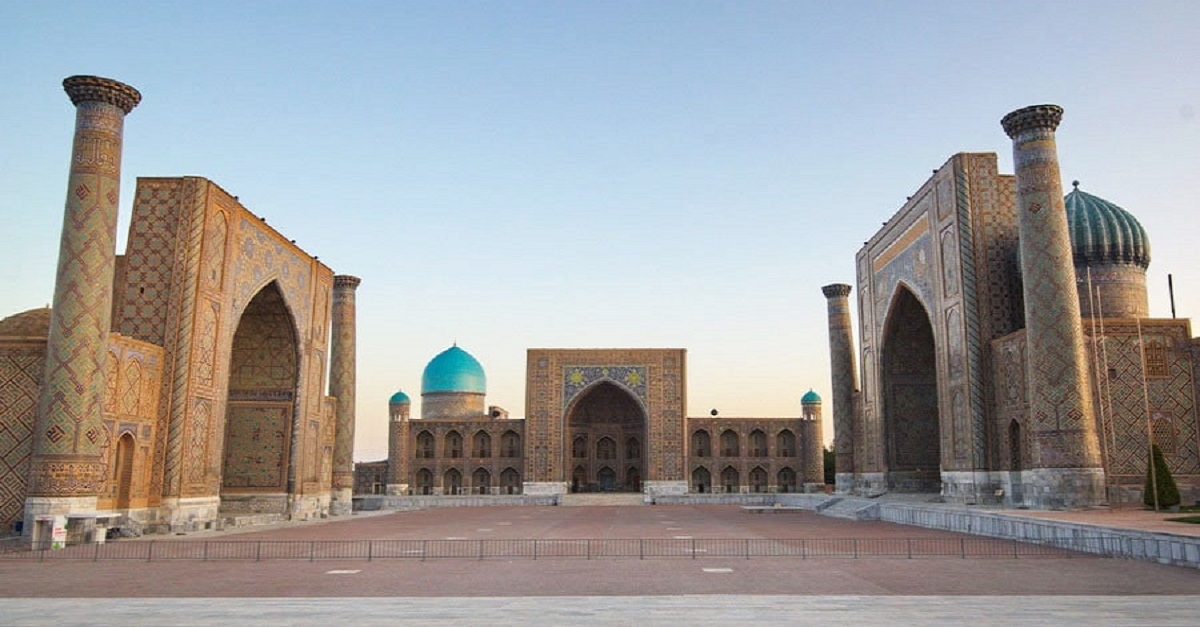In what forms does the name Samarkand appear in historical and written sources?

In Sogdian documents found on Mount Mug, the city is referred to as Samarkand, in the works of ancient Greek and Roman authors it is referred to as Marakanda, Marganda and Margandi. The Arabs called it Samara. In the book of the Italian traveler and writer Marco Polo, the city is mentioned in the forms of Samarkand, Sarmakan and Sanmarkan. In Persian it is called Samarkand. In ancient and medieval Chinese chronicles, the city of Samarkand, the region and their rulers are described by such terms as Kan or Samogan, Limogan, Sivingin and Saymaerkan.
In the works of Abu Raykhan Beruni, Mahmud Koshgari and Zahiriddin Muhammad Babur, it is stated that Samarkand means "Semirkand", i.e. "fat city"
In addition to them, in historical sources and books written in different periods, the name of the city is recorded in such forms as Samarian, Saramanka, Sakanna, Sanmangan, Samakiyon, Sumron, Shamarkan, Samara, Simroyat.
Science presents various opinions and considerations regarding the origin and semantics of the toponym Samarkand. Some foreign toponymists assumed that the name of the city came from the Sanskrit word Samaria - "gathering" or "meeting". According to the authors of the "History of Tabari", "Samaria" and "Giyos ul-lugot", "Samar" is the name of the king, and "kand" in Turkish means "city". So, Samarkand means the city of Samar.
In their other opinion, Shamar, one of the royal nobles of Yemen, fought with the Sogdians and destroyed the city. It was rebuilt and renamed Shamarkand. In another source, a spring was dug in the city by a nobleman named Samar. Since the population gathered and settled around this source, the place of the source was called Samarkand, i.e. Samarkan.
Toponyms of Samarkand, although they are consistent with each other in form, their morphology and basic meaning have changed and improved to a certain extent.
The sources of life Sangin-Chashmasiab, Sangrason-Novadon, Obirakhmat and Obimashat and their streams were the source of life in the Samarkand region. These sources are considered curative and favorable for many diseases. On this occasion, the book “Samaria” says: “There is an old custom of Samarkand people, on Monday evening after the new year (the last Monday of Navruz) they gather on the banks of this stream (Obirakhmat) and bathe and take a bath. They will take this water for a blessing." After such a festive religious evening, traditional gatherings “Sin poured out”, “The cauldron was filled” and “The boy got rich” were held.
The ancient term Samarkand is first pronounced Samarkand and then Samarkand.
The toponym Samarkand is morphologically two-syllable, and its initial syllable "samar" is widely used in the Sogdian, Persian-Tajik and Uzbek languages. The word means "famous, renowned, efficient" and blessed. The lexemes of the second syllable "kand, kand and kent" denote the concepts of a large or huge village, city, country. "Samarkand" in a combination of two different forms of expression is described as a famous and famous city. Therefore, such a famous Samarkand went down in history as a “polished land”, i.e. "shine of the earth"
Thanks to the centuries-old glory of the city of Samarkand, already in the Middle Ages in the regions of Central Asia and some adjacent countries, a number of cities, villages, places, as well as names and hydronyms were preserved in the form of Samarkand, Samarkandak.
According to the toponymic, linguistic and historical analysis of a number of terms-synonyms of the toponym Samarkand, this city was built in the form of a large village at the source of a large spring "Sarimaskan".
Its territory is called Muscat. Muscat was surrounded by defensive and defensive walls, and along the left bank of the Siyab in its northern part, a fortified residence of the ruler was built - “kuhandiz-ark”, and it flourished as a city. His fame increased, he was described by the name "Samarkand", that is, the famous city, and he went into the world.
Sunatillo Mukhiddinov
Samarkand State University
Head of the Department of History of Samarkand Civilization, Associate Professor.

